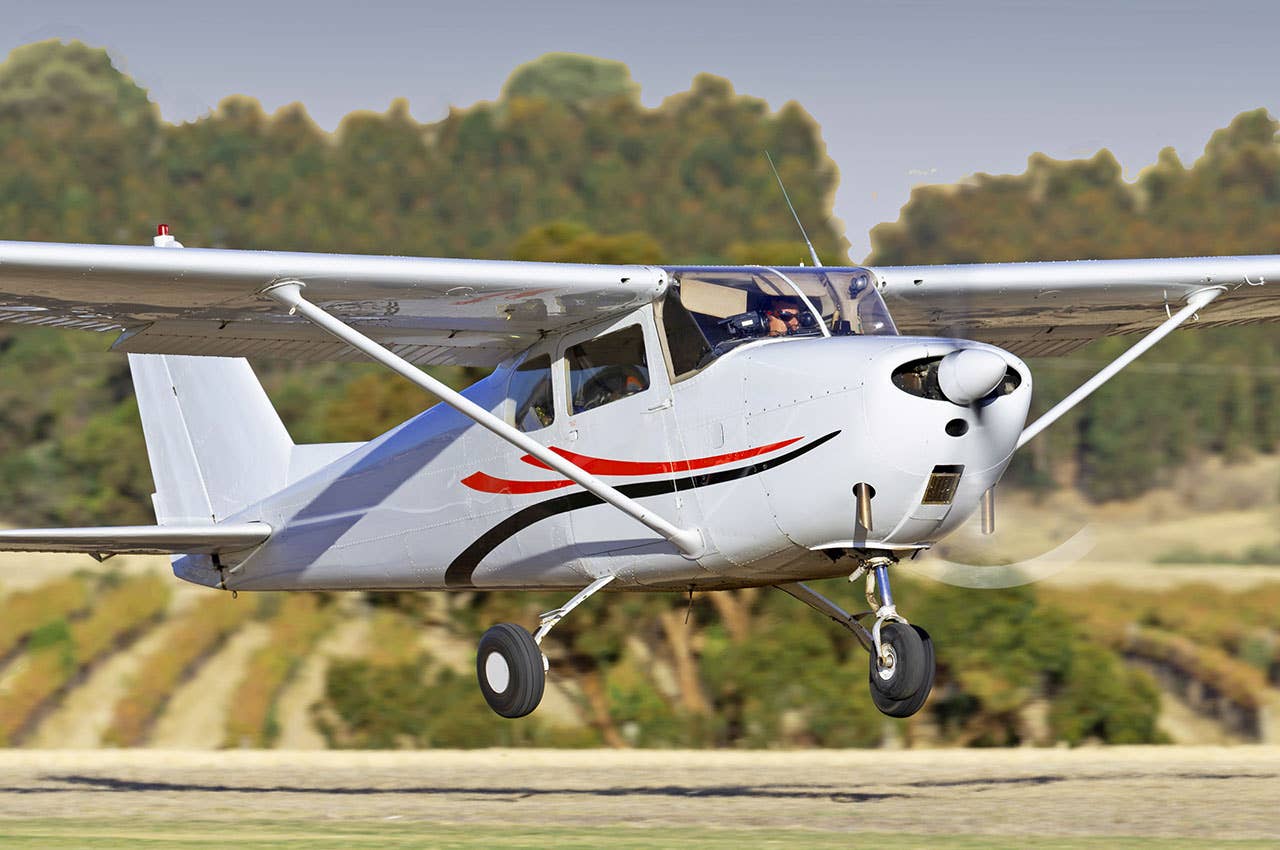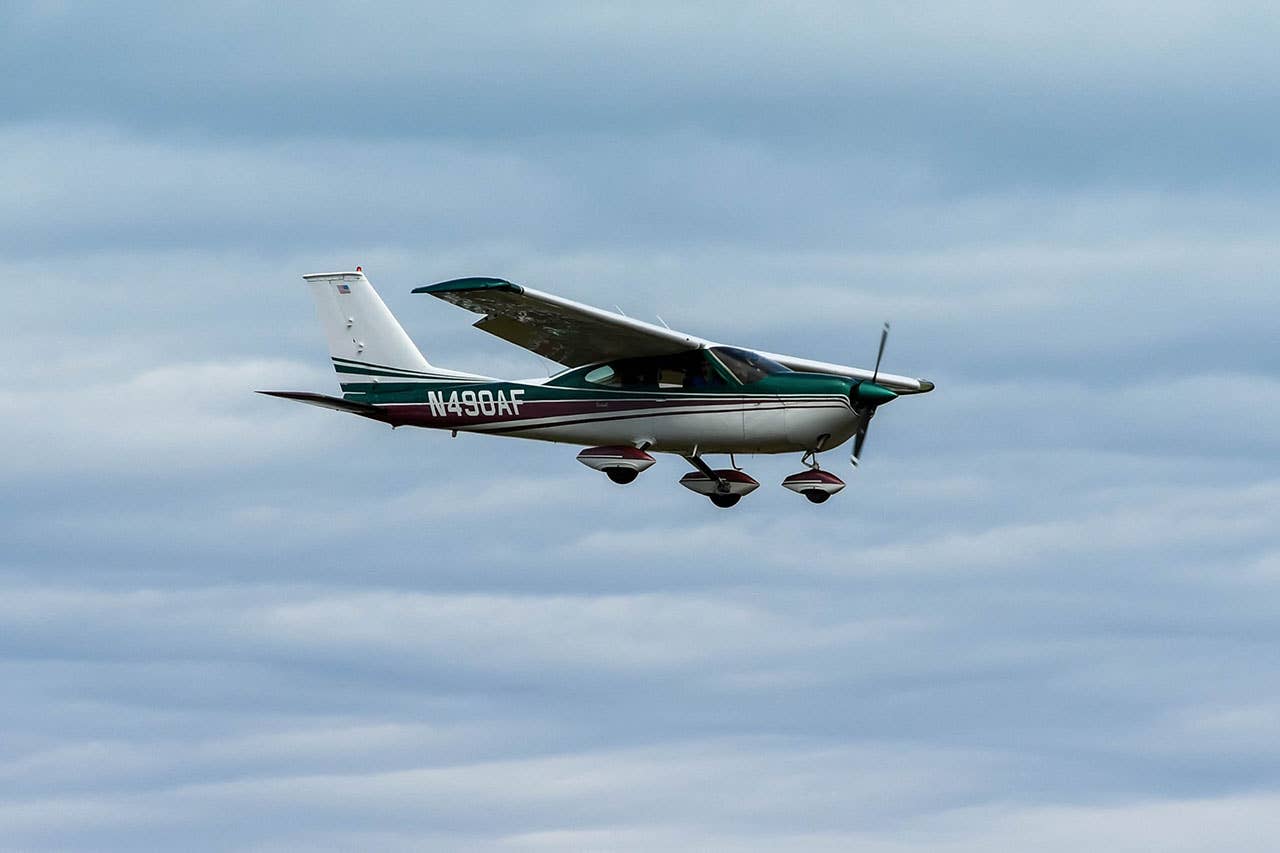Why A Pilot’s Experience With A Plane Matters
Being older than your aircraft can pay priceless dividends.

Itstarted out innocently enough.
I was asked if I would be interested in ferrying a recently sold 1961 172B Skyhawk halfway across the country, where the new owner would take delivery on his home field. "Oh, sure, we can get it there," was my ill-considered response.
Crawling into unknown airplanes and taking them to waiting hands can be interesting work. The trick is in keeping it from being more than interesting. This one seemed simple enough, probably involving an overnight stay to make the return connections. One could always wish for more speed than the plodding Cessna could muster, but, hey, a job is a job.
The route from the Midwest into the high desert was the familiar southern passage around the Rockies, offering a relatively low-level ascent over the Continental Divide, something even an elderly Skyhawk should be able to negotiate with a light load. I was assured that the bird had a fresh annual and good basic radios, including UAT ADS-B, and was told it was running fine. Piece of cake, should be just a leisurely 1,000-mile trip against the prevailing winds. How long it would take depended on weather and the vagaries imposed by the airline schedules for the return.
Ferrying such classic airplanes demands flexibility. I've learned to stay strictly day VFR and to fly solo, unfettered by anyone's agenda other than my own. My motto is, "I'll get there when I get there." Nothing ever goes as planned, and I don't need the urgencies of other individuals driving my decisions. Flying alone, I can park the plane anywhere and anytime I feel like it, using as much energy and daylight as I have available.
Trust But Verify
I met the old airplane the day before the departure, just to look it over. For its age, it appeared ready to go. The spiffy new interior presented well, a new battery had just been installed, and I added a quart of precautionary oil to make sure there was plenty for the flight. The transmitters checked out and the VOR was accurate, as far as we could tell on the ground.
The 1961 172B was the first Cessna Skyhawk of the series; the previous five model years were simply known as "172s." As the deluxe edition, a Skyhawk featured all-over paint (not just fuselage trim on bare aluminum), an engine-driven vacuum pump to power a full gyro panel instead of external venturi tubes, and standard amenities like dual controls. It was still powered by a six-cylinder Continental O-300, and the wing flaps were extended by yanking on a manual lever between the seats. The Omni-Vision rear windows were still three years in the future. For my part, I always liked the look of the straight-back Cessnas.
So, I rolled the old ’Hawk out at 7 a.m. the next morning, cranked it up and headed west. The plan was to break out of the marginal VFR weather that had moved in during the night, proceeding toward the now-clear desert southwest. The haze was thick, and there were spotty showers falling from a mid-level broken deck, but I was comfortable with my portable GPS leading the way.
Compounding Concerns
Center accommodated my request for VFR Flight Following, proving that the headphone jacks, audio panel and #1 comm were indeed working. The transponder, as it turns out, not so much. ATC reported that we were displaying various squawk codes other than the one selected. We agreed to keep me in the system and watch it for a while to see if it would settle down. That would be the first hint of trouble.
Then I found, by careful observation of the section lines in the landscape below, that the magnetic compass was a dependable 25 degrees off in all cardinal directions. I jotted down a makeshift compass correction card on my kneepad as a reminder, and from maintaining a steady GPS track, it became apparent that the directional gyro was precessing as well, at a rate of about one degree per minute. The bothersome things were beginning to pile up.
With the weather opening up as I went along, I elected to continue the mission using paper charts and satellite navigation. After all, the VOR receiver was working as a backup. With luck, a full day of flying would get the airplane where it needed to be. But about that time, the smooth old six-pack engine's droning sound changed pitch, then recovered. It was just a slight alteration, but it was there.
I did the usual troubleshooting; carb heat application only achieved the usual stable RPM drop, mixture adjustment made no difference, and a quick magneto check showed nothing out of the ordinary. And yet, those audible fluctuations were still there. By then, we were about 100 miles out, nearly to the first VOR station defining the route.
Suspecting a bad spark plug, faulty ignition wire or one of the mags acting up, I kept testing the magnetos every few minutes. About the third time I did that, the engine rebelled when I selected the left mag, firing erratically until I put the key back on "both." That was it. I immediately rolled into a 180-degree turn and reported to Center that I was returning to base.
These days, ATC has to solicit information about the reason for such a deviation, no longer able to accept it as a simple change of mind. The FAA is now treating an unexpected deviation as what it terms an "occurrence," considering each one to potentially be a sign of incompetent piloting or terroristic threat worthy of investigation. I reported that this was a post-maintenance test flight, and we were abandoning the original destination to get the transponder checked out. I saw no point in making a public confession that I was now flying an unairworthy airplane.
Never content to leave well enough alone, I tried the magneto check again and quickly learned that the errant mag was now "as dead as a doornail," a term whose origin predates even my antiquated vocabulary. Fortunately, I had a tailwind for the trip back home, where I turned the airplane over to the mechanic who had given it its annual inspection. "Three strikes is definitely an out," I told him, relating the sequence of failures that led to the return.
"How did you know you had lost a mag?" asked some of the hangar crowd. "I felt it," was my answer. My first logged time in a 172 was in 1960, so I knew from long experience what the airplane should feel like. Those old Continental sixes usually tick along like a sewing machine. Any subtle change in their rhythm needs looking into.
As suspected, the aged magneto had come apart internally, gradually shedding pieces in a valiant effort to keep the engine running before shutting down altogether. A set of new magnetos was ordered, but the buyer opted to back out of the deal. Evidently, the thought of other potential failures lurking in a 60-year-old airplane was too much of a trepidation. Thus ended my attempt at this piece-of-cake ferry trip.
When taking off in an unknown aircraft, one needs to treat that initial segment of the trip as a proving run. Test every function, keep an eye on vital indications, and listen to what the airplane is telling you. Sometimes, it pays to have a pilot who's been flying at least as long as the airplane.

Subscribe to Our Newsletter
Get the latest Plane & Pilot Magazine stories delivered directly to your inbox






